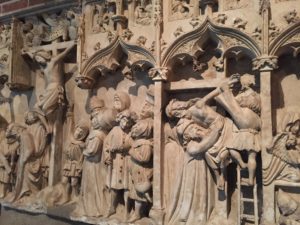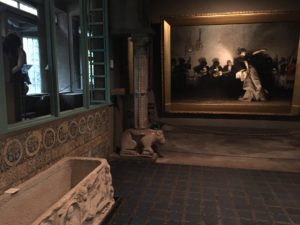Let’s start by saying that I did see the Red Sox play at Fenway Park – don’t worry! No trip to Boston would be complete without that. Our second Boston stop? An afternoon at the Isabella Stewart Gardner Museum. Most notably known for the mysterious art heist that took place in 1990, this amazing museum boasts all kinds of works of art from so many cultures.
Before I start talking about the amazing art pieces in the museum, here is a little information about Isabella Stewart Gardner and how she single-handedly created this remarkable home, which became a museum.
Isabella Gardner was born 1840 in New York City to a wealthy family. She married John ‘Jack’ Lowell Gardner, Jr. in 1860 and after their marriage they moved to Boson. She became a millionaire after her father passed away in 1891 and at that time she began to collect art seriously. One of her first purchases was Vermeer’s The Concert, purchased at a Paris auction.
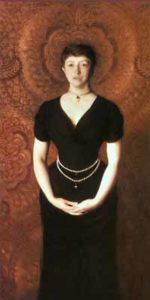
Unfortunately, Isabella Gardner’s husband passed, but in 1902 she moved into the fourth-floor living quarters of her home and devoted the next year to installing her collection of over 2,500 paintings, sculptures, tapestries, furniture, manuscripts, rare books and decorative arts.
Her museum opened with a gala reception and concert on January 1, 1903. Over the next 20 years, Isabella Gardner filled the museum with visual and performing artists.
In 1914, Isabella Gardner began remodeling the eastern side of the museum, converting a two-story music room into two floors of galleries, including a room to display ten large tapestries.
Isabella Gardner died in 1924, leaving the museum “for the education and enjoyment of the public forever.” In her will she stipulated that the museum trustees shall not “change the general disposition or arrangement” of works of art in the museum galleries.
My favorite room in the home was the combined areas: the Spanish Cloister and the Chinese Room. The Chinese Room was Isabella Gardner’s personal retreat, where she combined artwork from around the Orient. Across the room in the Spanish Cloister, you stand face to face with a stunning painting, El Jaleo (1882 by John, S. Sargent).
The tiles on the walls are colorful and intricate, but not all the same. The glazed tiles incorporate a figure of a mounted Iranian warrior made in 19th century, an emblem of Seville also of the 19th century, and Turkish tiles that date from around 1575-1600.
The 13th century columns in the room have animals at the base made of Italian marble.
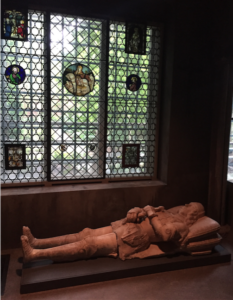
The Spanish Chapel really shows Isabella Gardner’s belief that art can serve religion.
Next to a stained glass window also lies an Alabaster tomb figure of a knight, which Isabella Gardner purchased on her last trip to Europe in 1906.
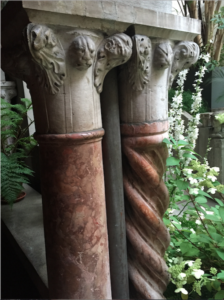
Lastly, I must mention the sunny courtyard that is the heart of the museum. The courtyard is surrounded by marble columns. Each column is different from the next, with varying colors and textures. In the center of the courtyard is a gorgeous mosaic floor with a Medusa head at the center.
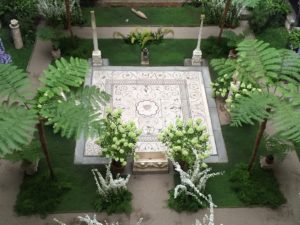
Of course I gravitate to the stone and tile artwork, but trust me there are plenty of beautiful paintings that I admired as we strolled from room to room. If you find yourself in Boston, definitely go to Fenway Park, but make your next stop the Isabella Stewart Gardner Museum.

